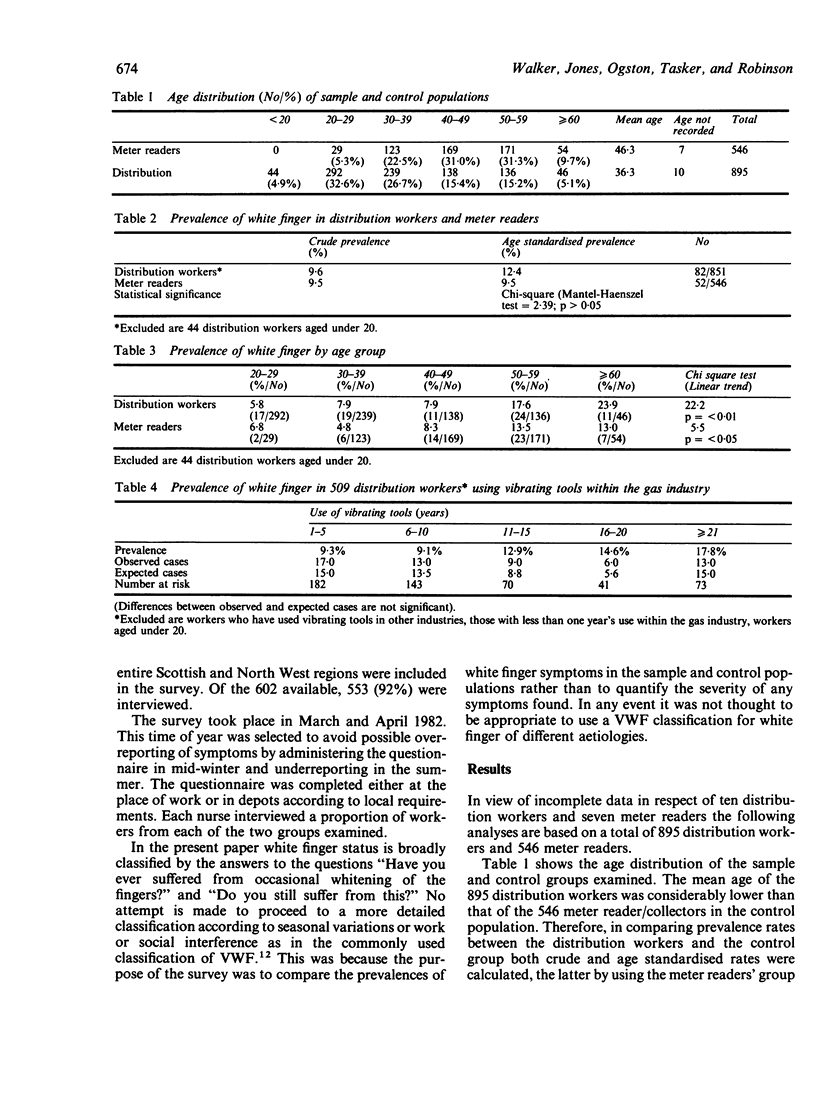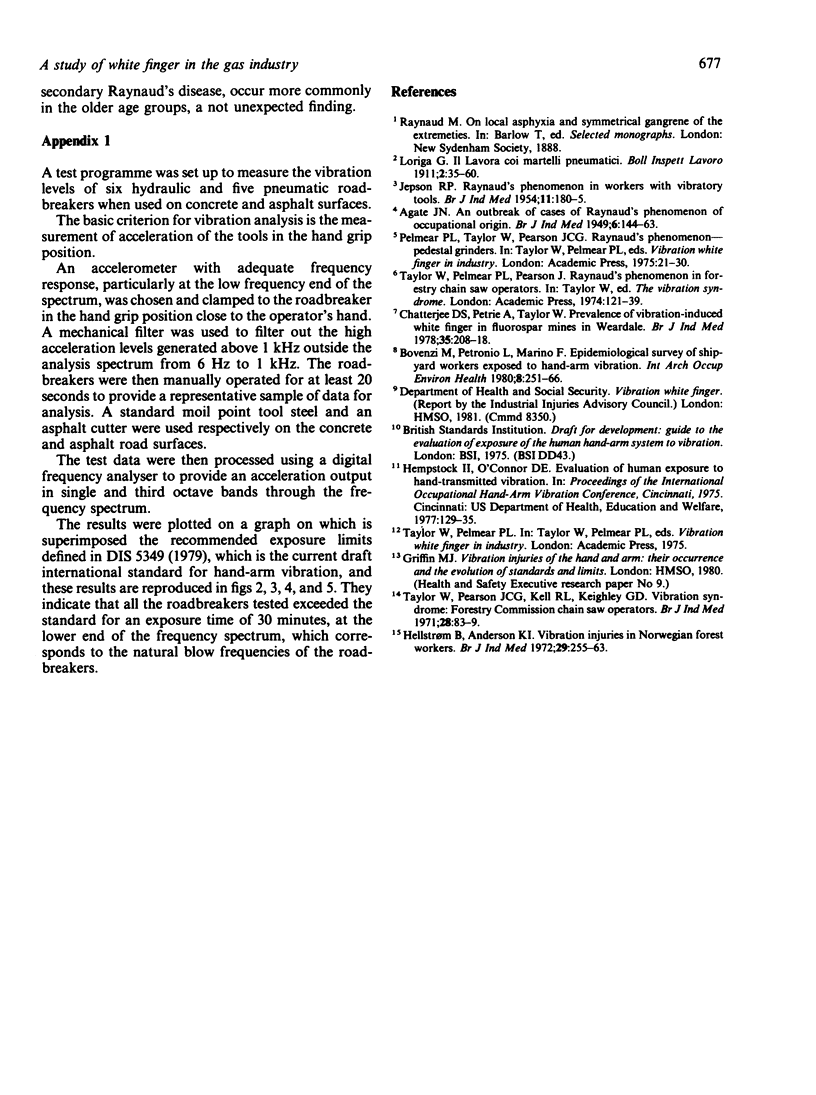Abstract
Men engaged in breaking or reinstating road surfaces are exposed to vibration from mechanical tools. In view of the lack of epidemiological information on vibration white finger in such a population, a survey was carried out to identify the prevalence of symptoms of white finger in a sample of men using these tools in the gas industry and to compare the prevalence with that found in a control group not occupationally exposed to vibration. Altogether 905 men (97%) in the gas industry and 552 men (92%) in the control group were interviewed, using a questionnaire from which the presence or absence of white finger symptoms from all causes was noted. The prevalence of white finger was 9.6% in the group exposed to vibration at work compared with 9.5% in the control group. The prevalence in the former group when adjusted for age differences between the survey and control populations was 12.2%, but this difference did not reach statistical significance. In case the approach of comparing prevalences of white finger from all causes might have obscured any contributory effect of vibration, the prevalence of white finger was examined in relation to the number of years vibrating tools had been used, this being the only measure of exposure to vibration available. No direct association was found between the prevalence of symptoms and number of years vibrating tools had been used. In view of this and the absence of a significant excess of white finger symptoms in the group using vibratory tools, the authors conclude that vibration white finger is not a special problem in the gas industry. Nevertheless, experimental tests carried out on the different types of roadbreakers used in the industry and on different road surfaces indicate that the vibration levels exceed the standards advocated in the draft international standard DIS 5349 (1979) at the lower end of the frequency spectrum. That no particular problem has been found may be due to the relatively short exposures to vibration experienced by the operators or the fact that they are able to grip the tools lightly, or even, possibly, that the standards suggested in DIS 5349 do not accurately reflect the risk of vibration white finger when they are exceeded at the lower end of the frequency spectrum for vibrating tools such as roadbreakers.
Full text
PDF





Selected References
These references are in PubMed. This may not be the complete list of references from this article.
- Bovenzi M., Petronio L., DiMarino F. Epidemiological survey of shipyard workers exposed to hand-arm vibration. Int Arch Occup Environ Health. 1980;46(3):251–266. doi: 10.1007/BF00380015. [DOI] [PubMed] [Google Scholar]
- Chatterjee D. S., Petrie A., Taylor W. Prevalence of vibration-induced white finger in fluorspar mines in Weardale. Br J Ind Med. 1978 Aug;35(3):208–218. doi: 10.1136/oem.35.3.208. [DOI] [PMC free article] [PubMed] [Google Scholar]
- Hellstrom B., Andersen K. L. Vibration injuries in Norwegian forest workers. Br J Ind Med. 1972 Jul;29(3):255–263. doi: 10.1136/oem.29.3.255. [DOI] [PMC free article] [PubMed] [Google Scholar]
- JEPSON R. P. Raynaud's phenomenon in workers with vibratory tools. Br J Ind Med. 1954 Jul;11(3):180–185. doi: 10.1136/oem.11.3.180. [DOI] [PMC free article] [PubMed] [Google Scholar]
- Taylor W., Pearson J., Kell R. L., Keighley G. D. Vibration syndrome in Foresty Commission chain saw operators. Br J Ind Med. 1971 Jan;28(1):83–89. doi: 10.1136/oem.28.1.83. [DOI] [PMC free article] [PubMed] [Google Scholar]


